#aztecempire
Explore tagged Tumblr posts
Photo
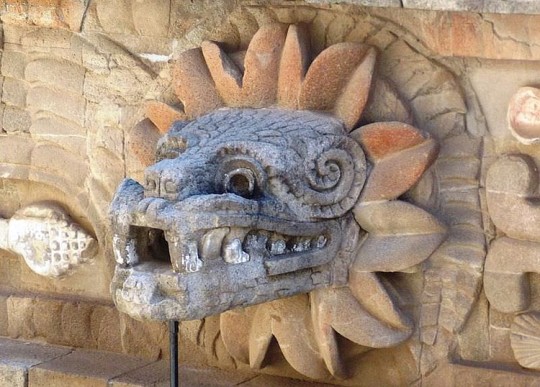
Quetzalcóatl
Quetzalcóatl (pron. Quet-zal-co-at) or 'Plumed Serpent' was one of the most important gods in ancient Mesoamerica. Quetzalcóatl was the god of winds and rain, and the creator of the world and humanity. A mix of bird and rattlesnake, his name is a combination of the Nahuatl words quetzal (the emerald plumed bird) and coatl (serpent).
In Central Mexico from 1200, the feathered serpent god was considered the patron god of priests and merchants as well as the god of learning, science, agriculture, crafts and the arts. He also invented the calendar, was identified with the Morning Star Venus, the rising morning star, he was associated with opossums and even discovered corn (maize) with the help of giant red ant that led him to a mountain packed full of grain and seeds. He was known as Kukulkán to the Maya, Gucumatz to the Quiché of Guatemala, and Ehecatl to the Gulf Coast Huastecs.
Quetzalcóatl was the son of the primordial androgynous god Ometeotl. In Aztec mythology he was the brother of Tezcatlipoca, Huizilopochtli and Xipe Totec. He is the 9th of the 13 Lords of the Day and is often associated with the rain god Tláloc. The god was particularly associated with the sacred site of Cholula, an important place of pilgrimage from 1200, and all round buildings of the Aztec culture were dedicated to the deity.
A Creator God
In the Late Postclassical period (from 1200) in Central Mexico the god came to be strongly associated with the wind (in particular as a bringer of rain clouds) and as the creator god Ehecatl-Quetzalcóatl. In Postclassical Nahua tradition Quetzalcóatl is also the creator of the cosmos along with either his brother Tezcatlipoca or Huitzilopochtli and is one of the four sons of Tonacateuctli and Tonacacihuatl, the original creator gods. After waiting for 600 years this aged couple instructed Quetzalcóatl to create the world. In some versions of the myth Quetzalcóatl and Tezcatlipoca repeatedly fight each other and as a consequence the four ages are created and destroyed with each successive battle between the two gods.
In an alternative version of creation Quetzalcóatl and Tezcatlipoca are more cooperative and together they create the sun, the first man and woman, fire and the rain gods. The pair of gods had created the earth and the sky when they transformed themselves into huge snakes and ripped in two the female reptilian monster known as Tlaltcuhtli (or Cipactli), one part becoming the earth and the other the sky. Trees, plants and flowers sprang from the dead creature's hair and skin whilst springs and caves were made from her eyes and nose and the valleys and mountains came from her mouth. In some versions of the story the divine spirit of Cipactli was understandably upset to have lost her physical body in such a brutal attack and the only way to appease her was through the sacrifice of blood and hearts and so one of the more unpalatable practices of ancient Mesoamerican culture, the ritual of human sacrifice, was justified.
Continue reading...
129 notes
·
View notes
Text
youtube
As we explore the Aztec way of life, we'll uncover their sophisticated agricultural systems, thriving trade networks, and remarkable artistic and architectural feats. We'll also confront the more controversial aspects of Aztec culture, such as human sacrifice and the use of tribute to maintain their empire.
#AztecHistory#AztecEmpire#MesoamericanCivilization#Tenochtitlán#LakeTexcoco#AztecSociety#AztecCulture#AztecReligion#HumanSacrifice#AztecArchitecture#AztecArt#HernánCortés#SpanishConquest#IndigenousAlliances#FallofAztecs#AztecLegacy#MexicanHistory#AncientAmericas#PreColumbianHistory#HistoryDocumentary#Youtube
0 notes
Text
Codex Borbonicus or Codex Cihuacoat
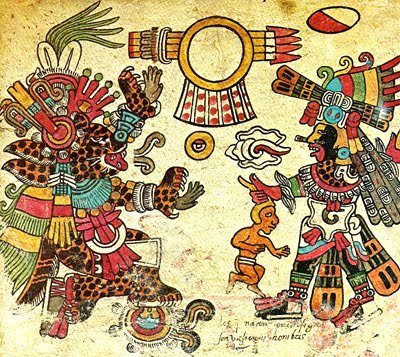
Codex Borbonicus also known as Codex Cihuacoat was written just a few years before the Spanish conquest of the Aztec Empire. Only a few of these codices are known, since the fourth tlatoani Itzcoatl ordered them all burnt because it was "not wise that all the people should know the paintings". Like all pre-Columbian codices, Codex Borbonicus is entirely pictorial, although some Spanish descriptions were later added.
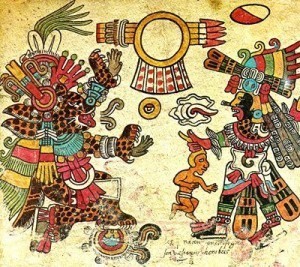
Codex Borbonicus Codex Borbonicus can be divided into three sections. The first section is one of the most intricate surviving divinatory calendars (or tonalamatl). Each page represents one of the 20 trecena (or 13-day periods), in the tonalpohualli (or 260-day year). The second section of the codex documents the Mesoamerican 52 year cycle, showing in order the dates of the first days of each of these 52 solar years. The third section is about rituals and ceremonies, particularly those that end the 52-year cycle, when the "new fire" must be lit. Download the Codex Borbonicus here:

Codex Borbonicus or Codex Cihuacoat
What does the Codex Borbonicus teach?
The Codex Borbonicus is an ancient Mesoamerican codex, which is believed to have been created in the 16th century in Mexico, likely in the vicinity of the Aztec capital, Tenochtitlan. It is one of the few surviving pre-Columbian manuscripts from the Americas. The codex primarily serves as a pictorial and symbolic representation of various aspects of Aztec culture, religion, and calendrical systems. Some of the key teachings and information that can be derived from the Codex Borbonicus include: - Calendar and Timekeeping: The codex contains intricate calendars used by the Aztecs, including the tonalpohualli (a 260-day ritual calendar) and the xiuhpohualli (a 365-day solar calendar). It provides information on the ritual and agricultural events associated with each day of these calendars. - Rituals and Ceremonies: The codex illustrates various religious ceremonies and rituals, such as sacrifices, festivals, and divination practices. It includes images of gods and goddesses and the offerings and actions associated with these rituals. - Deities: The Codex Borbonicus features depictions of Aztec gods and goddesses, along with their attributes and symbolic representations. It offers insights into the religious beliefs and pantheon of the Aztecs. - Agriculture and Farming: There are sections in the codex that depict agricultural practices, including planting, harvesting, and the agricultural calendar. This information was essential for the Aztecs' agricultural activities, which were closely tied to their religious and cultural practices. - Cosmology: The codex contains imagery related to the Aztec cosmology and their understanding of the universe. This includes depictions of celestial bodies, such as the sun and moon, as well as celestial events. - Historical Events: While the Codex Borbonicus is primarily focused on religious and calendrical information, it also includes some historical events and rulers' names. However, it is not as detailed in this regard as some other codices. It's important to note that the Codex Borbonicus, like other pre-Columbian codices, relies heavily on pictorial symbols and images, often with accompanying glyphs and hieroglyphics. Interpretation of its contents has been a subject of ongoing research and study among scholars to fully understand and appreciate its cultural and historical significance.
THE CODEX BORBONICUS - Browsing Facsimile Editions
Read the full article
#AztecEmpire#ceremonies#codex#CodexBorbonicus#CodexCihuacoat#Mesoamerican#rituals#Spanishconquest#tlatoaniItzcoatl#tonalamatl#tonalpohualli#trecena#xiuhpohualli
0 notes
Video
youtube
The Founding of Mexico City 1521: A Historical Journey Explore the fascinating history behind the founding of Mexico City in 1521, a city built upon the ruins of the great Aztec capital, Tenochtitlan. This historic event marked the beginning of a new era in Mesoamerica, blending Spanish and indigenous cultures to create one of the most vibrant cities in the world. How did Mexico City rise from the ashes of the Aztec Empire, and what legacy does it carry today? 🎥 Visit our YouTube channel to see more! 🎥https://www.youtube.com/channel/UC79oPmcGmZt6YyttMWWA-HA #MexicoCity #History #Tenochtitlán #Cortés #SpanishEmpire #MexicoCityHistory #FoundingOfMexicoCity #Tenochtitlan #1521History #AztecEmpire #SpanishConquest #HistoricTransformation #MesoamericanHistory #ColonialMexico #CulturalLegacy #AztecToMexicoCity #SpanishColonization #HistoricJourney #MexicoCity1521 #HistoryOfMexico #UrbanHistory #LegacyOfTenochtitlan #AztecAndSpain #ModernMexicoCity #HistoryUnveiled
0 notes
Text
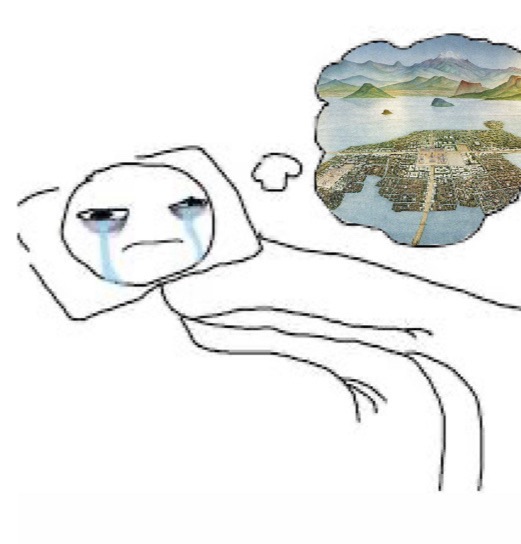
Tenochtitlan :’(
#ancient history#historical memes#history#history memes#meme#memes#Aztec#aztecempire#aztecs#mexica#tenochtitlan#ancient Mexico#Native American#Native American history#me so American history#mesoamerica#Central America#central American history
1K notes
·
View notes
Text
The chaos queen, Leta, is at it again!
Iztli (boy with the bandages) has just had two near death experiences in less than 24 hours (neither being directly Leta’s fault) and is trying to comfort a stressed out Leta despite being delirious with blood loss and having viper venom coursing through whatever blood is left. The snake child is the one who bit him, and as you can see, she is very sorry about it. Leta is doing her best to deal with the situation although she’s briefly distracted by the craftsmanship of some feather shield tapestry and briefly wishes she could be so talented.
Don’t worry about it though! Everyone here is covered by plot armour insurance ™️
#character design#character shenanigans#historical fantasy#my OCs are dumbasses and I love them#OCs#aztec mythology#aztecempire#shapeshifters#chaotic dumbasses#the rear window by Hitchcock I think#I had to make this audio with screen record someone teach me to edit audio properly please#plot armor
4 notes
·
View notes
Photo
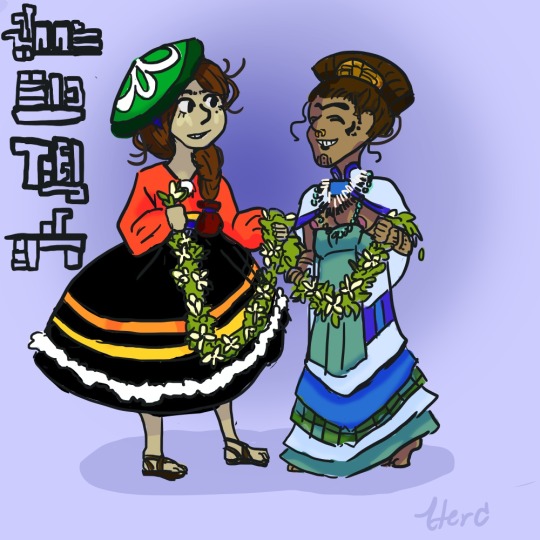
(what was tumblers policy on boobs again??? hmmm I can't remember but I think this is fine) Mergo! A distant continent I barely talk about on here, (I should change that) these are two people from two of merges powerful southern empires. this picture is of a magician of the mountain people and a noblewoman from the empire of the heavenly bodies (also known as euphoria). though these cultures are geographically distant, there is a jungle in the way, they still meet up to have agreements of trade and diplomacy. the garnlan is a symbol of peace. the magicians of Mergo tend to do the majority of their magic by the theory of Expression. the Mountain people (their empire is not yet named ) gives their magicians a wide array of freedom as they are only ever asked to give one gift to the betterment of the empire. The magicians distinguish themselves from regular people of the empire by the “shield hat” that they wear. they are called by Pocilla (masc. pocillo) the Euphorian empire is relatively modern and is seen as the successor to a number of empires that came from that region before their main competitor is the empire of jagandi, the empire of five kingdoms. Euphoria is ruled by a male emperor who is elected by the four Queens, the four queens are chosen from the nobility and are elected into their position by the different noble families. the queens serve for life unless they willingly retire. the empire used to have a dual monarchy, but that monarchy closed when the last rulers betrayed the other so the council of queens was formed instead. the Euphorian empire places a great deal of emphasis on gender roles, Mergo is a distant continent located in the western hemisphere.its vast amount of cultures and technologies has been independently developing sense the fay folk fell. the continent is connected to endless forest. but it is surrounded by even more forest, and those few visiting fay do not stay long, and if they are seen they are usually thought of as ghosts or claimed souls of the forest. the designer of the people are loosely inspired by the Aztec and Minoan civilizations, while the one on the left is entirely inspired by a tapestry I saw in a restaurant in the middle of nowhere. Mergo is a large continent that is heavily inspired by the Americas, both north and south. in the far north you reach the fragmented, friged lands of ins-qua-rî which are more heavily inspired by vikings and slavic cultures. disclaimer: truth is one of the reasons I hesitate to share more about mergo is because it is so heavily inspired by the americas, and i don't have great confidence in my knowledge of mesoamerica and southamerica, there Is some cultural overlap between my tribe and some of the practices of other southern culture, and I don't seek to recreate South America one to one. simply I have a lot more to learn, though I do hope to do it well as mergo was created to mesh my cultural identities.
#worldbuilding#pandoramusicbox#aztecempire#aztecinspired#worldbuildingculture#music magic#mesoamerica#minoan
2 notes
·
View notes
Text

#bohohippie#bohosoul#bohostyle#mexico#aztecempire#Mayan#temple#hippie#hippie vibes#yellow#yellow aesthetic#warmth#warm colors#photoblog#photography#boho girls#beach#spanish
2 notes
·
View notes
Text

▪︎ Royal Tomb of Machu Picchu
Beneath the Temple of the Sun in Machu picchu is a cave known as the "Royal Tomb". It's a huge boulder of stone inclined to support part of the Temple of the Sun.
This alleged tomb is a structure carved in solid rock, which in turn serves as a foundation for the foundation of the temple, on the side wall there are two large trapezoidal niches with stone beams and two small niches in the wall more pro Read more about it.
The various engravings carved across all the walls of the cave show sublime work.
The engravings extend outward where, on the right side of the tomb, you can still see the fine works carved in the rock representing all kinds of sacred symbols and even a hemicicle-shaped construction with three is calones which stands for the symbol of the Pachamama. This symbol was very important to the city and its construction is done in such a way that it is blurred symmetrically with the rock.
According to studies, this place was used to deposit the bodies of the Empire elite, people belonging to the highest spheres of the aristocracy and high priests, as well as the royal family.
Because of this, this cave was renamed the Royal Tomb of Machu Picchu, because there is also a possibility that at some point it housed the body of the highest representative of nobility, the Inca.
#peruconocelo #MachuPicchu
#question everything#ancient#ancestors#machupicchu#history#Inca#ancient structures#aztec gods#aztec warrior#aztecempire
3 notes
·
View notes
Photo

NEW MAP: North America 1519: Cortés’ expedition to Mexico (22 Apr 1519) https://buff.ly/2IyvIkz In 1518 and 1519 the Spanish colonies of Cuba and Santiago (Jamaica) sent expeditions to explore the Gulf of Mexico, establishing its extent and discovering the Aztec Empire. In late 1518 Governor Velázquez of Cuba gave the magistrate Hernán Cortés command of a follow-up expedition to secure a foothold on the mainland, but the ambitious Cortés soon broke away from Velázquez’s authority, gathering over 500 adventurers to join him. Sailing to Mexico, he established the town of Villa Rica de la Vera Cruz (Veracruz) on the coast of the Aztec Empire in April 1519. #16thcentury #1519 #americanhistory #april22 #aztec #aztecempire #aztecs #cartografia #cartographic #cartography #conquistador #conquistadors #cortes #cuba #historian #histories #historybuff #historylesson #historyteacher #map #mapmaking #maps #mexicanhistory #mexico #militaryhistory #northamerica #spanishempire #veracruzcity #worldhistory #newmap (at Veracruz) https://www.instagram.com/p/B9i5SOkADKb/?igshid=y58dcntvf5g8
#16thcentury#1519#americanhistory#april22#aztec#aztecempire#aztecs#cartografia#cartographic#cartography#conquistador#conquistadors#cortes#cuba#historian#histories#historybuff#historylesson#historyteacher#map#mapmaking#maps#mexicanhistory#mexico#militaryhistory#northamerica#spanishempire#veracruzcity#worldhistory#newmap
14 notes
·
View notes
Photo
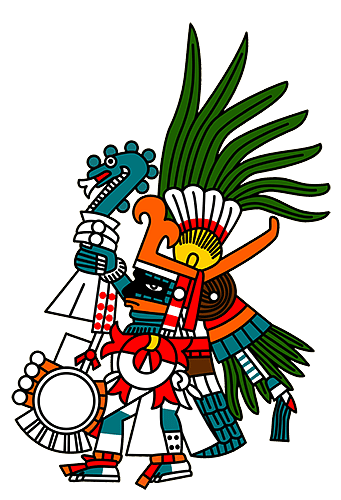
Huitzilopochtli
Huitzilopochtli (pron. Huit-zi-lo-pocht-li) or 'Hummingbird of the South' or 'Blue Hummingbird on the Left' was one of the most important deities in the Aztec pantheon and for the Méxica he was the supreme god. He was the god of the sun and war, considered the patron of the Aztec capital Tenochtitlán and associated with gold, warriors and rulers. His calendar name was Ce Técpatl (1 Flint) and his nagual or animal spirit was the eagle.
Unlike many other Aztec deities, Huitzilopochtli has no clear equivalents from earlier Mesoamerican cultures. In Aztec mythology Huitzilopochtli was the son of Omecίhuatl and Ometecuhtli, respectively, the female and male aspects of the androgynous primordial god Ometeotl. In an alternative version, the god is the offspring of Coatlίcue, the supreme earth goddess. Huitzilopochtli was also considered the brother of those other great Mesoamerican gods Quetzalcoatl, Tezcatlipoca and Xipe Totec.
Huitzilopochtli as the Sun
Huitzilopochtli famously avenged the murder of his mother Coatlίcue (or in some versions actually saved her) when he defeated his siblings the 400 Centzonhuitznahuac and Centzonmimizcoa on Mt. Coatepec, the snake mountain. According to the legend, Coatlίcue, whilst sweeping her temple, tucked some feathers under her breast and with these she became pregnant with Huitzilopochtli. Her children were outraged at this development and attacked Coatlίcue but when they decapitated their mother Huitzilopochtli sprang from the corpse with all his weapons in hand and lopped off his sister Coyolxauhqui's head. In some versions of the myth she had been the leader of the revolt, in others, she had been trying to warn Coatlίcue of the plot against her. In any case, Huitzilopochtli dismembered her corpse so that her torso fell to the bottom of the mountain and when he slung the head into the skies it became the moon. Huitzilpochtli then dealt with his other unruly siblings the Centzonhuitznahuac and the Centzonmimizcoa, putting an end to their takeover attempt and dispersing them into the heavens to become the southern and northern constellations respectively.
For the Aztecs the tussle between Coyolxauhqui and Huitzilopochtli was thought to reoccur everyday which explained the daily exchange for control of the sky between the sun and moon. Huitzilopochtli was believed to be accompanied on the first half of his journey across the sky by the spirits of fallen warriors (who would later return to earth as hummingbirds). From noon the god was then accompanied by the Cihuateteo, the spirits of women who had died during childbirth. When night fell Huitzilopochtli moved through the Underworld until dawn and he then once more travelled the skies.
Continue reading...
73 notes
·
View notes
Text
POST THREE
OH GUYYYS. so i was chilling in this old house (the owner got sacrificed) and I was just exploring and i found these 3D doll things. recently i have befriended one of the locals so I went to him with them to see if he could explain them. turns out the dolls are pretty cool. they are made to represent woman who have / can reproduce. the doll i have carries one smaller figurine that is made to be a child. in successful Aztec childbirth is the Aztec sweat bath, known as temazcalli. which is strongly associated with healing and cleansing. the small figures are thought to help people deal with dangerous or stressful experiences related to childbirth. kind of like how stuffed animals in 2022 are used to comfort people (especially small children). the makers of these dolls made without shirts because breasts are crucial in upbringing of young children. the dolls are often found in bathing areas. below ive attached a few photos of said figurines.


0 notes
Video
youtube
The Spanish Conquest of the Aztec Empire 1519-1521 Uncover the dramatic events of the Spanish Conquest of the Aztec Empire (1519-1521), a clash of civilizations that forever changed the course of history. Led by Hernán Cortés, the Spanish forces, with the help of native allies, toppled the mighty Aztec Empire, leading to the fall of Tenochtitlan and the birth of New Spain. How did a small force of conquistadors defeat such a vast and powerful empire? What are your thoughts on the strategies, betrayals, and cultural impact of this historic conquest? Share your opinion on the lasting legacy of this pivotal event. 🎥 Visit our YouTube channel to see more! 🎥 https://www.youtube.com/channel/UC79oPmcGmZt6YyttMWWA-HA #SpanishConquest #AztecEmpire #History #HernánCortés #Tenochtitlán #SpanishConquest #AztecEmpire #1519History #CortesAndMontezuma #Tenochtitlan #MesoamericanHistory #Conquistadors #NewSpain #ColonialHistory #AztecFall #HistoryOfConquest #CulturalClash #HistoricEvents #AztecCivilization #EuropeanExploration #AztecWars #HistoryOfTheAmericas #SpanishEmpire #AztecAndSpain #LegacyOfConquest #pulsevibesmedia
0 notes
Text

Tlahuicole was a famous warrior of the Tlaxcala Confederacy, a Pre-Columbian polity that was a long-standing geopolitical rival of the neighbouring Triple Alliance, more commonly known as the Aztec Empire.
Tlaxcala and its regional allies Huexotzinco and Cholula had been engaged in intermittent warfare against the Triple Alliance and sometimes among themselves for decades prior to the arrival of the Spanish in 1519.
Though details of most of his life are scarce, his apparent exalted status among the Tlaxcalteca makes it reasonable to assume that Tlahuicole was heavily involved in the bloody battles of the first decades of the 16th century.
The first real details of Tlahuicole’s life date to around 1516. Texcoco, second city of the Triple Alliance, had fallen into civil war amongst rival claimants to its throne. One claimant was backed by Moteczuma II of Tenochtitlan and another was supported by Tlaxcala.
Tlahuicole led the Tlaxcaltec contingent in this conflict but was ambushed and captured by a Huexotzinca commander.
Tlahuicole was sent to Moteczuma as a prize, but the emperor apparently held him in such high regard that he offered to release Tlahuicole. This generosity stung Tlahuicole’s honour and he refused, saying it would be shameful if he returned to his homeland while the other Tlaxcaltec prisoners were sacrificed to the gods. He was adamant that he should share the same fate as his countrymen.
Moteczuma could not countenance sacrificing such a great champion and instead offered an alternative solution. He would give Tlahuicole command of an army marching against the Purepecha, a powerful people that had invaded Triple Alliance territory. Hoping to die in battle, Tlahuicole accepted.
After winning several bloody victories, he returned to Tenochtitlan with many spoils and captives. Again, Moteczuma offered to send him back to Tlaxcala and again he refused. He also rejected the offer to command all of the Triple Alliance’s armies, sinch that would inevitably result in him leading a Mexica army against his own people.
Finally, Moteczuma consented to give the great warrior what he wanted most. To die in battle.
Tlahuicole was fully equipped for battle and tied to a stone in a great, open square. With Moteczuma and his court spectating, eight of Anahuac’s greatest warriors attacked one at a time. Each were defeated, though Tlahuicole did not kill them. The ninth opponent landed a blow to Tlahuicole’s head, stunning him. The Anahuaca warrior then killed his adversary.
At last, two years after his capture, the champion of Tlaxcala met the end he so desired.
#history#real history#military history#aztecempire#Aztec#mexican#historical figures#mesoamerica#native#warrior#aztec warrior#mexico#mexican history
1 note
·
View note





